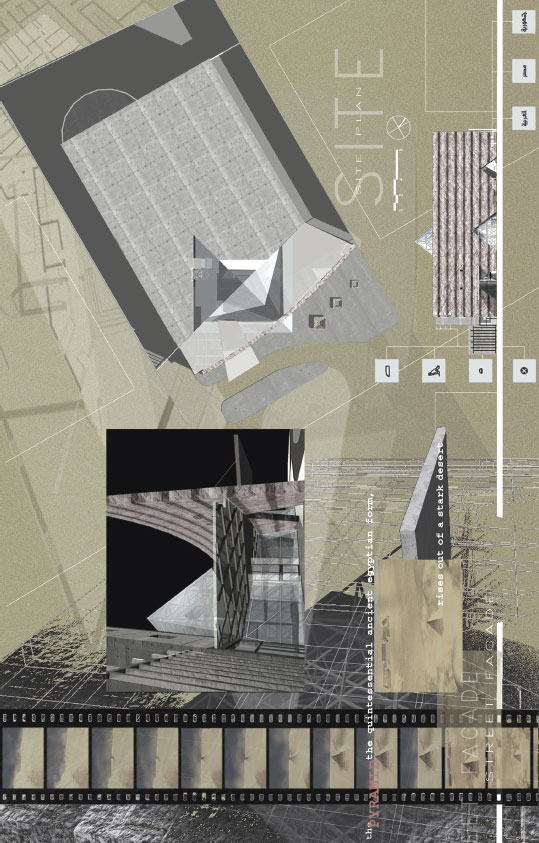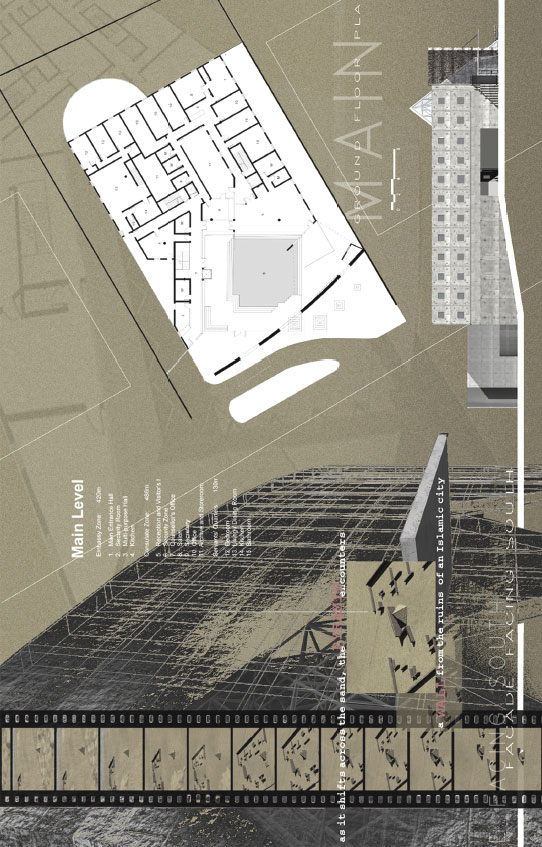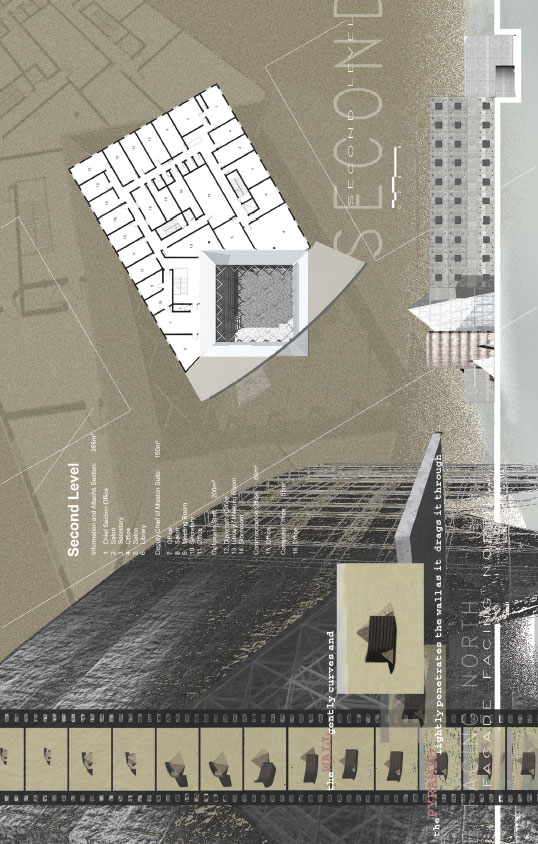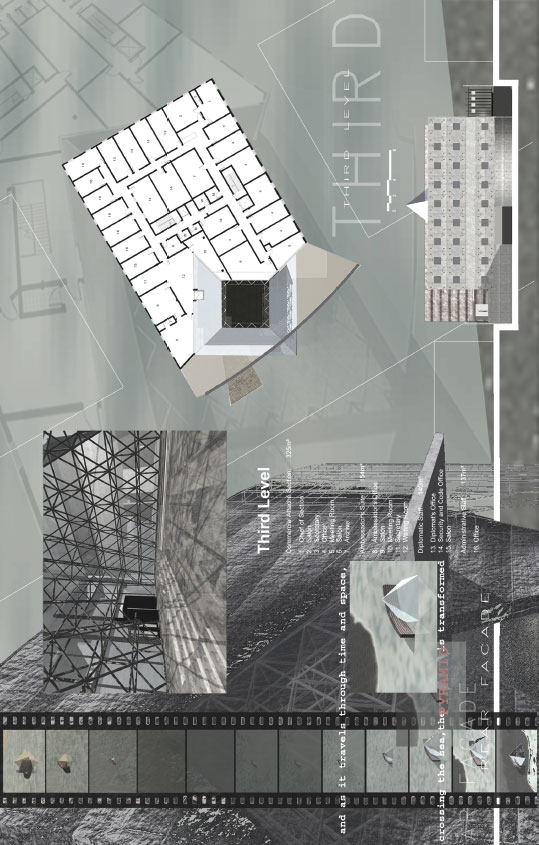

Staufenberg Strasse, Tiergarten, Berlin, Germany
1998
Competition
Collaborative effort of Nezar AlSayyad and Gordon Gee
Foreign Building Fund, Ministry of Foreign Affairs, Egypt.
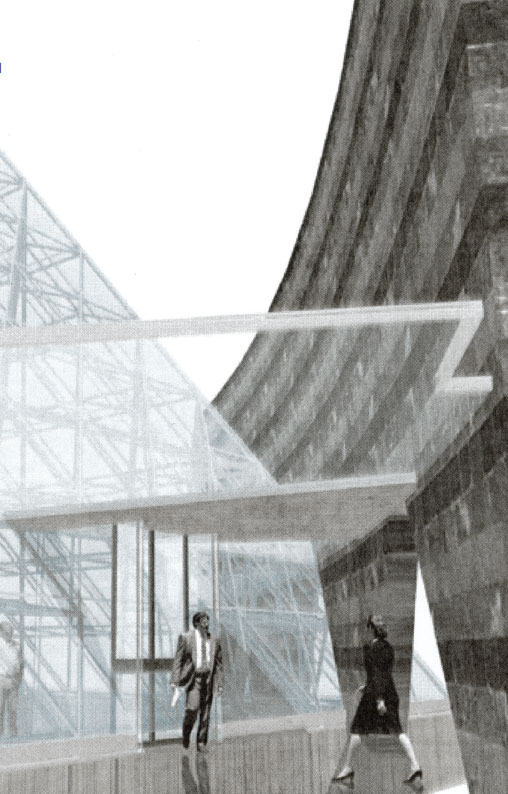 A typical urban lot 2200 square meters (37 x 61.2/57.6 meters) in the neighborhood designated to accommodate most of the embassies are that being relocated from Bonn.
A typical urban lot 2200 square meters (37 x 61.2/57.6 meters) in the neighborhood designated to accommodate most of the embassies are that being relocated from Bonn.
A set back of 6 meters from façade line and 5 meters from neighboring lots was required, defining a maximum footprint of 1100 square meters, a maximum height of three stories, resulting in a predefined spatial envelope of 27 x 41 x 12 meters.
A concrete skeleton with flat slab floors, prefabricated concrete panels as exterior walls, a metal space truss with glass sheathing, and a thick multicourse limestone façade.
A formal Embassy without an Ambassador’s residence but with two principal sections, Ambassadorial headquarters and Consulate. Among the spaces in the Ambassadorial headquarters are the Ambassador’s suite, diplomatic staff quarters, communication office, and Chief of Mission suite. The Consulate includes the visa section, Commercial Attaché section, and information Attaché section. In addition, servants’ quarters, security spaces, a kitchen, a main reception hall, and a garage were also required. Total area specified by program was 2730 square meters.
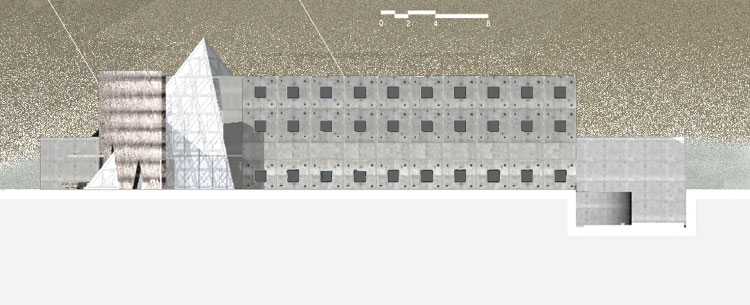
 Imagine if you will, a pyramid rising out of a sheer and stark desert. Imagine also, shimmering on the horizon, the ruins of a city—of different passions and contours. And imagine again the pyramid trespassing across boundaries, confronting the city’s walls, and moving—now a hybrid form—to ultimately settle in a new land. Such an imaginary is the genesis of our story, the crafting of a visual narrative that embodies journeys through time and place.
Imagine if you will, a pyramid rising out of a sheer and stark desert. Imagine also, shimmering on the horizon, the ruins of a city—of different passions and contours. And imagine again the pyramid trespassing across boundaries, confronting the city’s walls, and moving—now a hybrid form—to ultimately settle in a new land. Such an imaginary is the genesis of our story, the crafting of a visual narrative that embodies journeys through time and place.
Our building can be reconstituted into its essential components, the pyramid, the block, and the wall. Similarly, our concept is based primarily on three interrelated notions: that they pyramid is the most recognizable Egyptian form, that zoning and building codes in Berlin specify a standard building block envelope, and finally that, in an era of security concerns, an Embassy requires a solid defense wall.
The solution we proposed employed a glass pyramid as both entrance and multi-purpose hall for the Embassy functions. (The pyramid was also placed to separate the more public consulate section from the securitydriven diplomatic section of the Embassy). Instead of a collision scenario, the pyramid barely pierces the security wall form while fusing with the rest of the building mass behind. The wall reveals only a very small part of the pyramid’s geometry, allowing the casual or first-time viewer to imagine or mentally construct what remains veiled. Also, this stone wall’s color and pattern are reminiscent of Islamic mosque architecture in Egypt making it somewhat recognizable to Egyptians. Its principal foreign viewers are presented with an abstracted geometry, which while possessing an obvious frame of reference, can still be experienced and appreciated independent of its obvious representational reference. One intent was to leave some clues for a possible reading of the building in which the veiling of the pyramid, the quintessential representation of ancient Egypt, by a wall with Islamic references captures the complexity of both Egypt’s long history, and its contemporary reality.
These ideas lie at the core of the crosscultural architecture we practice, the sense that the making of architecture, in the new global era, requires a reflective attitude regarding both the place in which it is built, and the multiple readings and meanings that different observers may attach to it. In other words, the sense that the constructions of here and now are always shaped by possibilities afforded from elsewhere.
